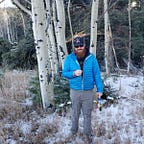“Effects of Thinning and Prescribed Fire on Wildfire Severity” By Carl N. Skinner
Carl N. Skinner and his team examine the effect of controlled burns and thinning on the Cone fire that burned in September of 2002. The fire started outside the northern boundary of the Blacks Mountain Interdisciplinary Ecological Research Project (BMIERP) and burned ~653 Hectares. The burn scar crossed three experimental plots, two Low Spices Diversity (LoD) and one High Spices Diversity (HiD); only one LoD plot was not prescribed fire. Skinner explains that
The effects in the [Low Spices Diversity Lop and Scatter (loDLS)] treatment area appear quite different from the others. This area did not receive a prescribed burn following thinning. Additionally, the area adjacent to the LoDLS unit was thinned approximately 20 years before the Cone Fire. Surface fuels were not treated following harvest except for lop and scatter in the LoDLS unit and conditions were similar between the adjacent area and the LoDLS treatment area Thus, there was very little difference in the proportion of mortality in these areas (Figure 4). Skinner et al
This case study demonstrates the need for further examination of wildfires that cross prescribed fire plots. With the increasing intensity of wildfires, why is there not a larger push for incorporating prescribed fire into management plans?
